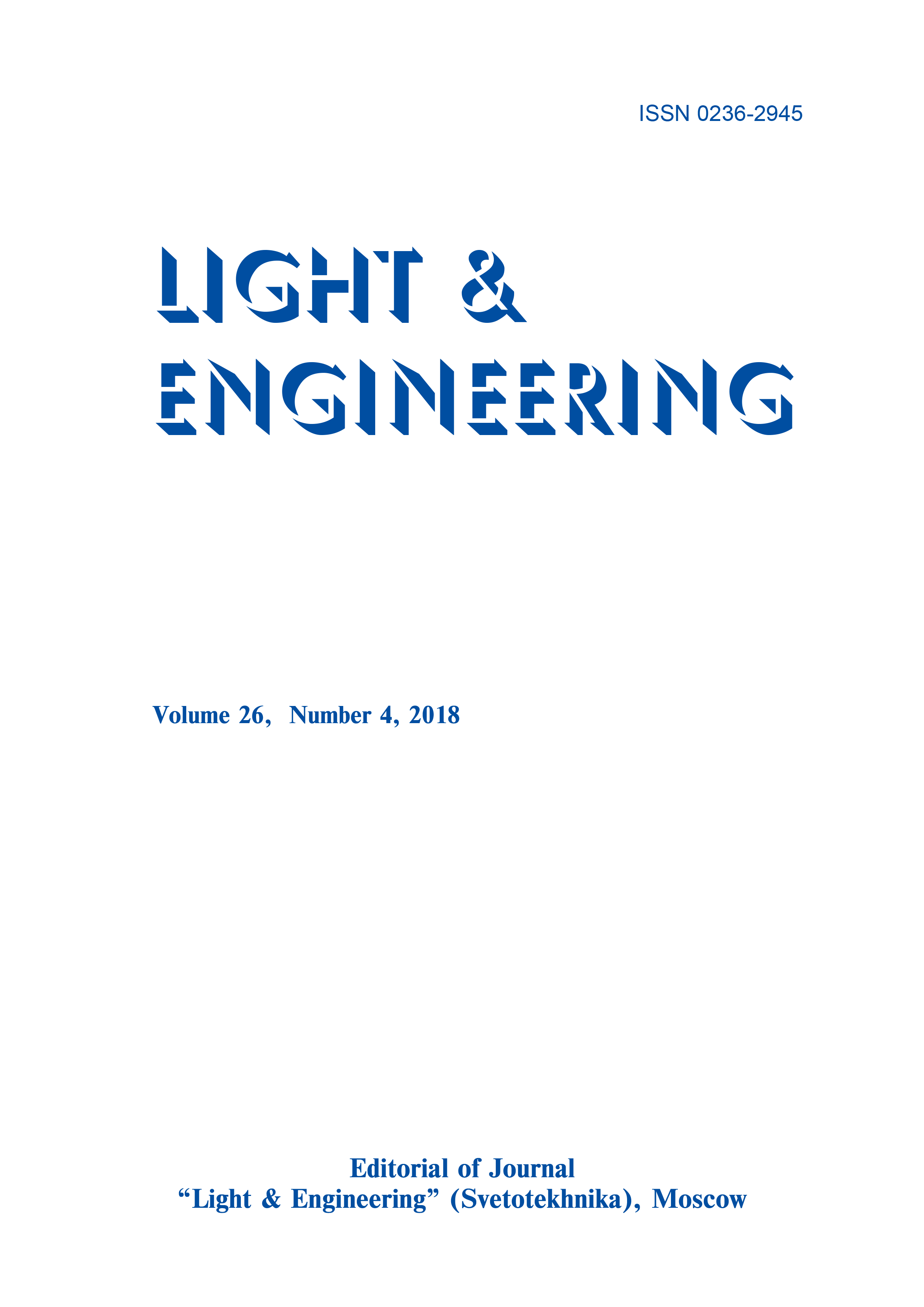Content

Abstract:
The digital economy assumes an increase in the role and importance of the lighting engineering science in the industrial countries. Nowadays, the development of a country is largely characterized by its “light supply” with minimum energy consumption. In modern Western Europe, for example, it is impossible to separate climate protection policies from energy policy. In the countries of the Middle East, there is a rapid development of the construction industry as many residential and public buildings are being built, and energy consumption issues are acute. The article studies the influence of the light climate of Russia and the countries of the Middle East on the development of construction lighting equipment, which enables to optimize energy consumption, create comfortable working and leisure conditions.
References:
1. Boos, George Valentinovich. Lighting engineering values and units [Text]: a manual in the course “Fundamentals of light engineering” for students majoring in “Electron and nanoelectronics” / G.V. Boos, A.A. Grigoriev, S.M. Lebedkova; Ministry of Education and Science of the Russian Federation, National Research University “MPEI”. Moscow: Izdvo MPEI, 2018, 63 p. 2. Aizenberg Ju.B. Energy Saving and Technological Policy in Lighting // Light & Engineering, 2005. No4, pp. 70–77. 3. GOST R 557032013. Electric light sources. Methods of measuring spectral and color characteristics: national standard of the Russian Federation / Developed by the Research Institute of Light Sources named after A. N. Lodygina. Introduced for the first time / Entered 20140701. Moscow: Standartinform, 2015. – III, 53 p. 4. Russian Energy Forum, October 1821 [Text]; Energy of the Urals, XVII international specialized exhibition; Energy Saving2011, IX specialized exhibition; Cable. Wires. Enforcement, VI specialized exhibition; Electrical and lighting engineering, III specialized exhibition: [official catalog]. Ufa: The world of the press, 2011, 79 p. 5. Lichttechnik: Engl. Dt. Fr. Russ. / Aut. Ralf Zimmermann, Joachim Lange, Ingrid Preiss et al.; Hrsg. von Ralf Zimmermann. – Berlin: Technik, Cop. 1989, 426 p. (TechnikWorterbuch). 6. Basic building norms. Residential buildings. Committee of Standards VSNH at the C.E.C. of the U.S.S.R. 1934. Order of the Ministry of Regional Development of the Russian Federation of December 27, 2010 No. 783 “On the approval of the code of rules” SNiP 230595 “Natural and artificial lighting.” The provisions of the SP 52.13330.2011 “SNiP 230595” “Natural and artificial illumination” are prolonged based on the Decree of the Ministry of Construction and Housing and Communal Services of the Russian Federation of November 7, 2016 N 777 / “On approval of SP 52.13330” SNiP 230595 * Natural and artificial lighting. “(With amendments and additions introduced by the Order of the Ministry of Construction and Housing and Communal Services of the Russian Federation of February 10, 2017 No. 86 / pr.). 7. Order of the Ministry of Regional Development of the Russian Federation of December 27, 2010 No. 783 “On the approval of the code of rules” SNiP 230595 “Natural and artificial lighting.” The provisions of the SP 52.13330.2011 “SNiP 230595” “Natural and artificial illumination” are prolonged based on the Decree of the Ministry of Construction and Housing and Communal Services of the Russian Federation of November 7, 2016 N 777 / “On approval of SP 52.13330” SNiP 230595 * Natural and artificial lighting. “(With amendments and additions introduced by the Order of the Ministry of Construction and Housing and Communal Services of the Russian Federation of February 10, 2017 No. 86 / pr.). 8. Building climatology. Updated version of SNiP 230299. – Moscow. 2015. SNiP 230299 was approved by the Order of the Ministry of Regional Development of the Russian Federation (Ministry of Regional Development of Russia) of June 30, 2012 No. 275 and was enacted from January 1, 2013. SP 131.13330.2012 “SNiP 230199* Construction climatology» introduced and approved the amendment No. 2 by the Order of the Ministry of Construction and Housing and Communal Services of the Russian Federation of November 17, 2015 No. 823 / pr, which was put into effect from December 1, 2015. 9. Stashevskaya Nadezhda Alexandrovna. Architectural lighting technology [Text]: methodical instructions for executing computational and graphic works / N.A, Stashevskaya, M.I. Kharun, T.V. Skripnik. Moscow: Peoples’ Friendship University of Russia, 2016, 45 p. 10. Gershun A.A. Theory of the light field / In: Selected works on lighting and photometry. – Moscow: GIMFL, 1956, pp.221–400. 11. Gutorov M.M. Basics of lighting and light sources. Textbook / М.М. Gutorov. Moscow: Energoatomizdat, 2014, 384 p. 12. Yelahovsky Dmitry Vyacheslavovich. Physical principles of construction lighting equipment [Text]: a textbook for students of the Construction Faculty / D.V. Elakhovsky, I.A. Malinenko; Ministry of Education and Science of the Russian Federation, Federal state budget educational institution of higher professional education Petrozavodsk State University. Petrozavodsk: Publishing house PetrGU, 2013, 48 p.
Keywords
- light
- local climate
- cloud cover
- sky brightness
- SNiP
- daylight
- artificial lighting
- energy audit
- energy saving
- energy efficiency
Recommended articles



